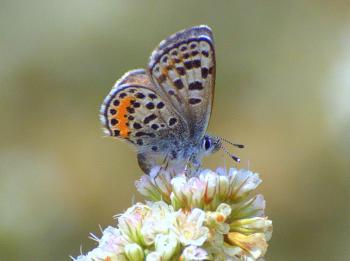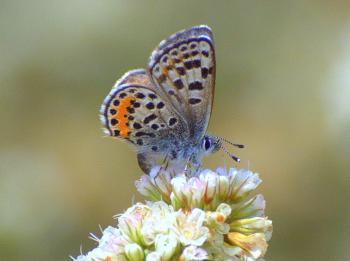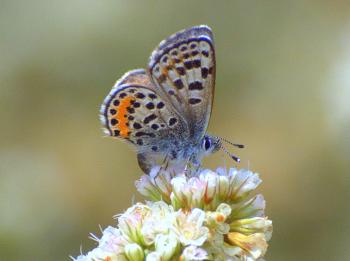LOS ANGELES—The El Segundo Blue Butterflies, once facing extinction, are now thriving on 200 acres of sand dunes at the west end of Los Angeles International Airport (LAX).
Members of the media were invited for a rare view of the butterflies July 30 at the natural wildlife preserve that is currently closed to the public to help meet its restoration goals.
Richard Arnold conducted the tour of the dunes and blue butterflies. Arnold is an entomologist who has his own consulting firm, providing environmental consulting dealing with endangered species of insects, and is providing consulting services to the Los Angeles World Airports (LAWA).
“There has been an ongoing effort that started back in the mid 80s to plant the specific food plant for the butterfly which is the seacliff buckwheat shrub and also to improve the habitat. The butterfly feeds on the flower heads of the buckwheat, with the caterpillars feeding on the seeds developing in the flowers, and the adults drinking nectar from the flowers,” said Arnold. “After planting more buckwheat shrubs over the years, now more recently they have tried to control the weeds, so that the buckwheat will regenerate naturally.”






